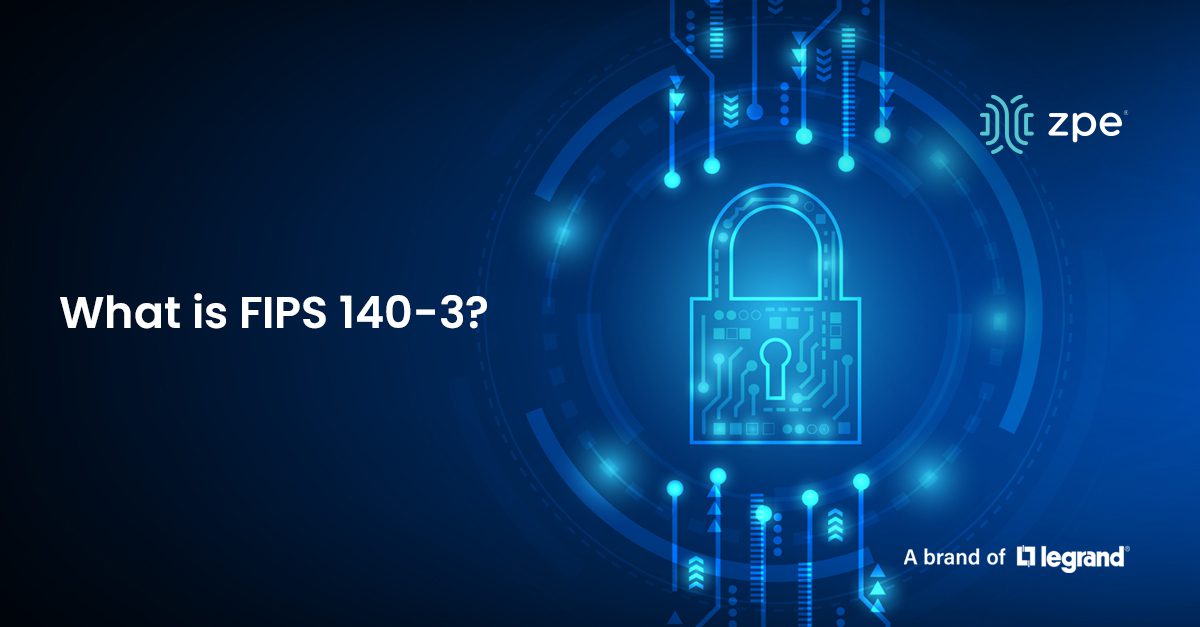
Handling sensitive information is a responsibility shared by so many organizations. Ensuring the security of data, whether in transit or at rest, is not only critical for maintaining the trust of end users and customers, but is often a regulatory requirement. One of the most reliable ways to secure data within network infrastructure is by implementing FIPS 140-3-certified cryptographic solutions. This certification, which was developed by the National Institute of Standards and Technology (NIST), serves as a benchmark for robust encryption practices, enabling organizations to meet high security standards and ensure regulatory compliance.
Let’s explore what it means to have FIPS 140-3 certification, why it matters, and its key applications in network infrastructure.
What is FIPS 140-3 Certification?
The Federal Information Processing Standard (FIPS) 140-3 certification is a stringent, government-endorsed security standard that sets guidelines for cryptographic modules used to protect sensitive data. It includes requirements for securing cryptographic functions within hardware, software, and firmware. The certification process rigorously tests cryptographic solutions for security and reliability, ensuring that they meet specific criteria in data encryption, access control, and physical security.
There are four levels of FIPS 140-3 certification, each adding layers of protection to help secure information in various environments:
- Level 1: Ensures basic encryption standards.
- Level 2: Adds tamper-evident protection and role-based authentication.
- Level 3: Provides advanced tamper-resistance and strong user authentication.
- Level 4: Offers the highest level of security, including physical defenses against tampering.
FIPS 140-3 certification ensures that an organization’s network infrastructure meets high standards for cryptographic security. This is important for protecting sensitive information against cyber threats as well as fulfilling regulatory requirements.
Why FIPS 140-3 Certification Matters
1. Meeting Regulatory Compliance Requirements
FIPS 140-3 certification is often required by regulatory bodies, especially in sectors like government/defense, healthcare, and finance, where sensitive data must be protected by law. Here are a few industry-specific regulations that FIPS 140-3-certified modules help with:
- Defense: DFARS, NIST SP 800-171
- Healthcare: HIPAA
- Finance: PCI-DSS
- Energy: NERC CIP
- Education: FERPA
Compliance with FIPS 140-3 also makes it easier for organizations to meet audit requirements, reducing the risk of fines or penalties for security lapses.
2. Strengthening Customer Trust
End users and customers expect that their data is handled with care and protected against breaches. By using FIPS 140-3-certified solutions, organizations can demonstrate their commitment to securing customer data with recognized, government-endorsed security standards. FIPS certification is a valuable trust signal, showing customers that their information is being managed with the highest level of protection available.
3. Protecting Against Emerging Cyber Threats
Relying on uncertified or outdated cryptographic solutions increases the risk of data breaches. FIPS 140-3-certified solutions are tested to withstand advanced attacks and tampering, which is an important safeguard against threats that continue to evolve in complexity. Certified modules help prevent unauthorized access to sensitive data, whether through intercepted communications, phishing, or other cyber threats.
FIPS 140-3 certification gives assurance, especially for organizations that handle high volumes of data, that they have adequate encryption to protect against sophisticated attacks.
4. Ensuring Business Continuity and Operational Resilience
According to IBM’s Cost of a Data Breach Report 2024, data breaches now cost $4.88 million (global average), with healthcare being the most costly at $9.8 million per breach. The financial impact is staggering, but the ongoing operational disruption and recovery efforts determine whether an organization can fully bounce back from a breach. With FIPS 140-3 certification, there’s an added layer of resilience to an organization’s infrastructure, which reduces the likelihood of breaches and ensures a secure base for maintaining continuity (such as through an Isolated Recovery Environment). By implementing FIPS-certified encryption, businesses can minimize downtime, maintain access to encrypted systems, and recover more smoothly from potential incidents.
5. Gaining a Competitive Advantage in Security-Conscious Markets
Organizations that follow rigorous data security standards are more likely to gain the trust of clients, stakeholders, and customers, especially in industries where security is non-negotiable. Organizations that adopt FIPS 140-3-certified infrastructure can differentiate themselves as having a reputation for security, which can be a competitive advantage that attracts customers and partners who value data protection.
Key Applications of FIPS 140-3 in Network Infrastructure
For organizations managing large amounts of customer data, FIPS 140-3-certified solutions can be applied to several critical areas within network infrastructure:
- Network Firewalls and VPNs: FIPS-certified encryption ensures that data moving across networks remains private, protecting it from interception by unauthorized users.
- Access Control Systems: Identity-based access controls with FIPS-certified modules add another layer of security to protect against unauthorized access to sensitive data.
- Out-of-Band Management: Using FIPS 140-3-certified encryption in OOB management ensures the same stringent security level for OOB traffic as for in-band network traffic.
- Data Storage and Backup: FIPS-certified encryption secures data at rest, protecting stored customer information from unauthorized access or tampering.
- Cloud and Hybrid Environments: For companies using cloud or hybrid environments, FIPS-certified encryption helps protect data across multiple infrastructure layers, ensuring consistent security whether data resides on-premises or in the cloud.
Discuss FIPS 140-3 With Our Network Infrastructure Experts
FIPS 140-3 certification gives organizations the ability to reassure customers, meet compliance requirements, and protect critical data across every layer of the network. Get in touch with our network infrastructure experts to discuss FIPS 140-3, isolated management infrastructure, and other resilience best practices.
Explore FIPS 140-3 for Out-of-Band Management
Read about 7 benefits of implementing FIPS 140-3 across your out-of-band management infrastructure. This article discusses the benefits it brings to remotely accessing devices, protecting against physical attacks, and securing edge infrastructure.
More Resources
- View ZPE Systems’ FIPS 140-3 Certification
- ZPE Systems’ Supply Chain Security Assurance
- Analysis of the American Water Cyberattack
- Why Securing IT Means Replacing End-of-Life Console Servers
- What To Do if You’re Ransomware’d: A Healthcare Example
- The CrowdStrike Outage: How to Recover Fast and Avoid the Next Outage
